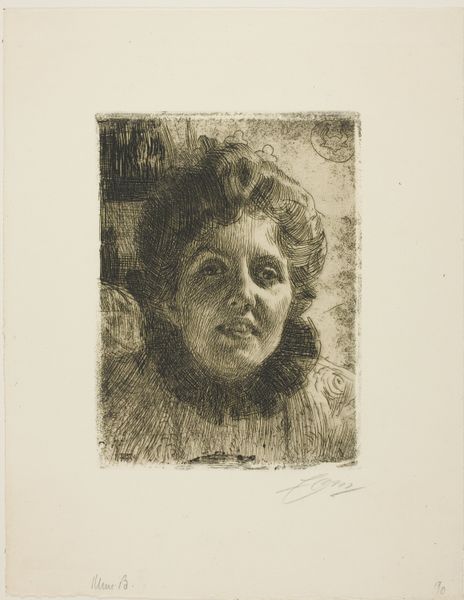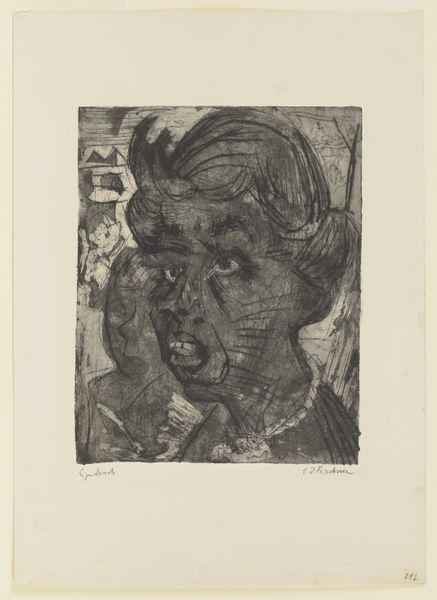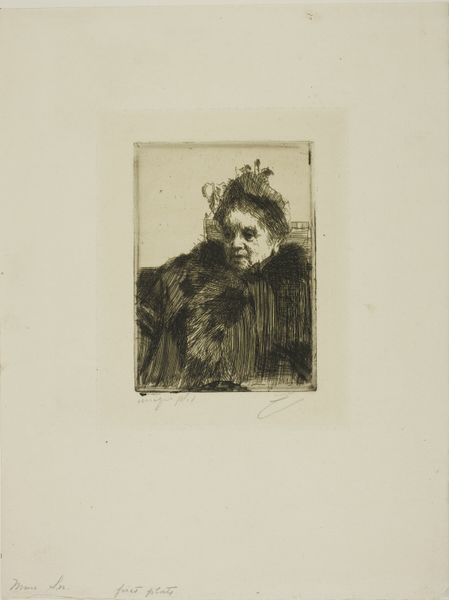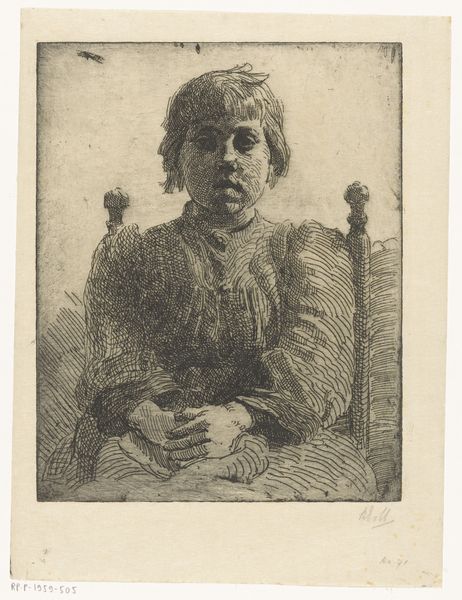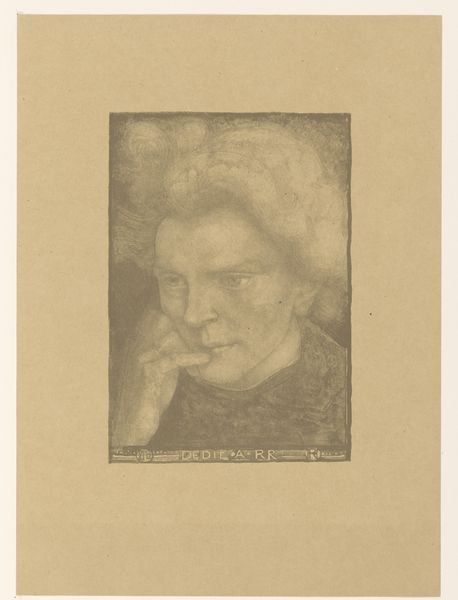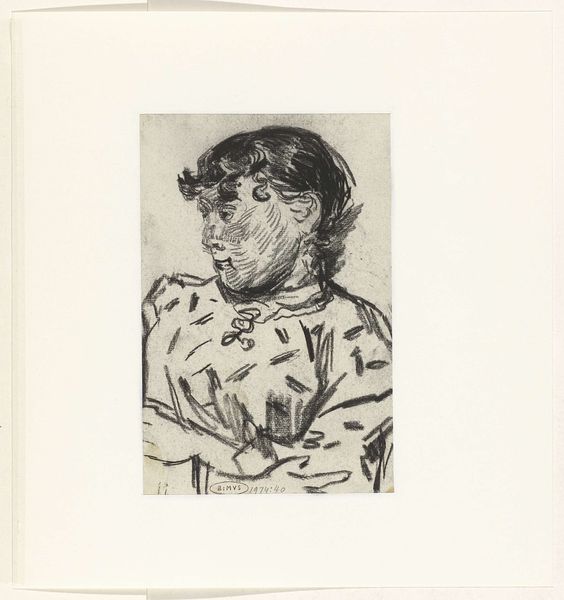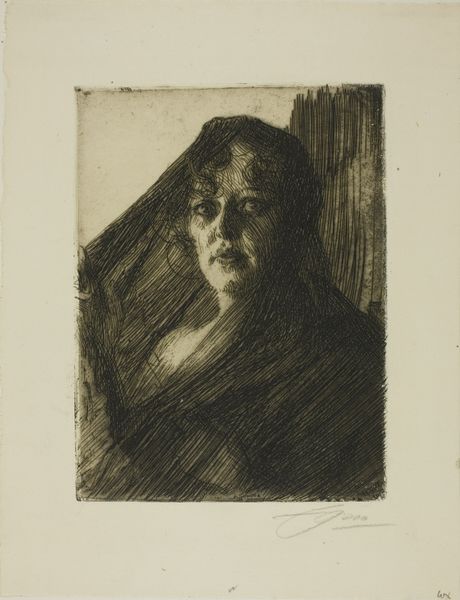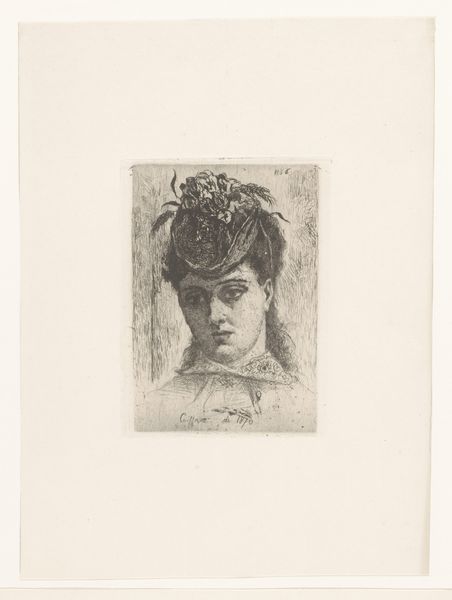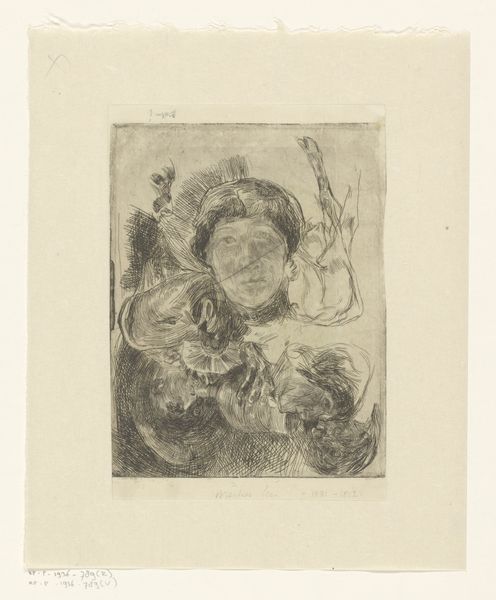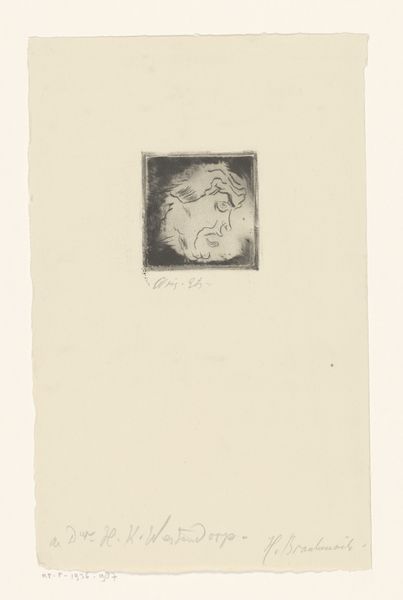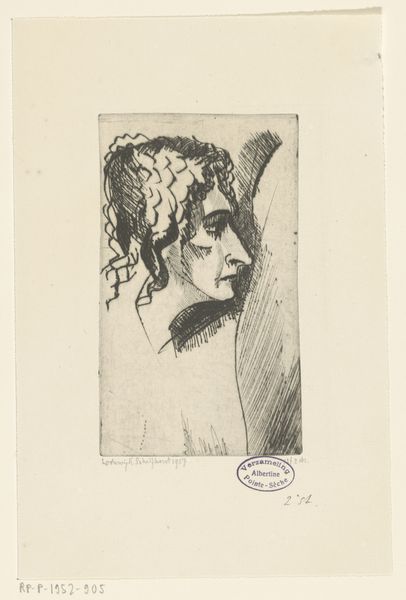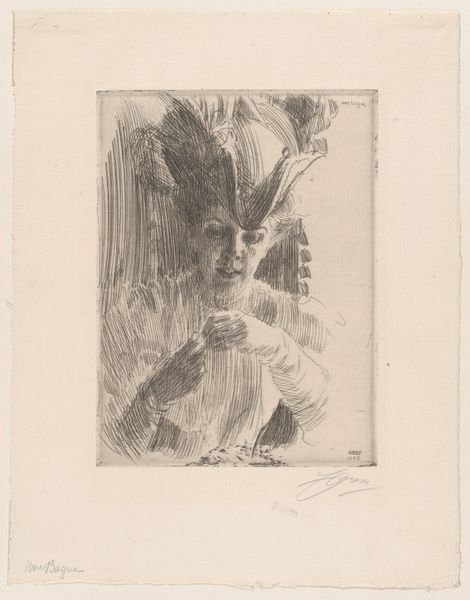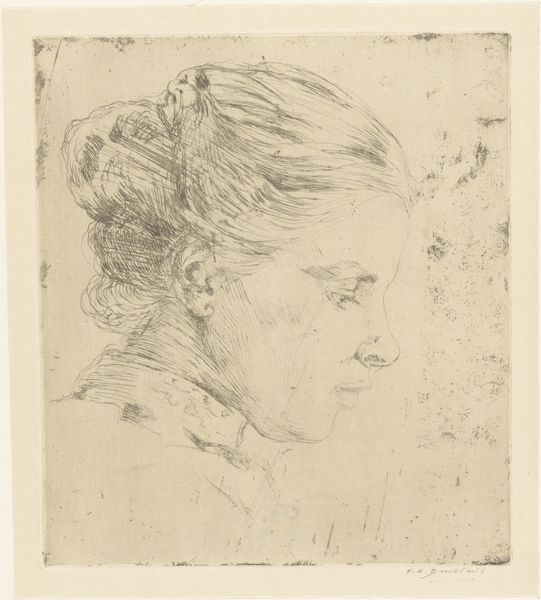
Aurore (Mrs. Aurore Klintberg, née Oxenstierna, Head) 1909
0:00
0:00
Dimensions: 200 × 149 mm (image/plate); 384 × 286 mm (sheet)
Copyright: Public Domain
Curator: Here we have Anders Zorn’s 1909 etching, "Aurore (Mrs. Aurore Klintberg, née Oxenstierna, Head)," currently residing at the Art Institute of Chicago. Editor: My immediate reaction is to the stark contrast. The incredibly fine, almost frantic lines against the emptiness of the paper create an intense focus on the subject’s face. It’s a rather intimate portrayal, wouldn't you agree? Curator: Indeed. Let's delve into Zorn's etching process here. He was a master of the technique, using it to explore nuances of light and shadow with incredible economy. Notice how he uses varied line weights to build form and suggest depth. The roughness around the collar contrasts so effectively with the smoothness of the face. Editor: Yes, the materials speak volumes. Etching allows for this remarkable detail. I'm particularly drawn to how the paper itself becomes part of the composition, almost a void surrounding and defining the subject. It accentuates the contours. How do you see the piece interacting with its contemporary social context? Curator: Zorn was part of a generation grappling with modernity. His subjects often reflect the shifting social landscape of Europe. Mrs. Klintberg, from her attire and bearing, embodies a certain upper-class sensibility of the time. This connects to Zorn’s career success amongst the elite, creating artwork destined for specific drawing rooms and portfolios of wealthy collectors. Editor: Interesting. From a formalist standpoint, that ruffled collar draws the eye right in, creating a frame within a frame for her face. It guides us in. The use of pure line is exquisite, managing to capture both volume and texture simultaneously. Curator: Precisely! And thinking about process, the time-consuming nature of etching is also key. It shows a commitment both by the artist and commissioner of such portraiture—invested in craftmanship as much as likeness. Editor: It is remarkable to view how the art work allows a connection between process and product so visible in its etched materiality. Curator: Ultimately, what stays with me is how Zorn made visible a delicate representation of early twentieth-century womanhood by taking full advantage of an antiquated print medium. Editor: For me, it’s the arresting, immediate impact that persists – that face emerging from the page because of its striking structural elements.
Comments
No comments
Be the first to comment and join the conversation on the ultimate creative platform.
